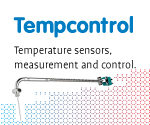At low pressures, when a gas is contained between two surfaces is with a gap size less than 3.3x the mean free path length of a gas molecule the free molecular flow regime exists.
At such pressures, the average molecule may travel from a hot wall to a cold wall without collision with another gas molecule, and the thermal conductivity becomes a function of the number of molecules present.
For approximately parallel surfaces at temperature $T_{1}$ and $T_{2}$, the free molecular heat transfer coefficient $H_{fm}$ [W/m2 K] is defined as [RD5-6]:
$$H_{fm} = a_{0} \lambda P \sqrt{\frac{T_{2}}{T_{1}}}$$
in which $a_{0} $ is the thermal accommodation factor and $P$ is the gas pressure. Parameter $\lambda$ is the free molecular thermal conductivity and is defined as.
$$\lambda ={ \frac{\gamma + 1}{2 (\gamma – 1)} \sqrt{\frac{R_{0}}{2 \pi M_{m} T_{avg}}}}$$
where, $\gamma$ is the specific heat ratio $c_{p}/c_{v}$, $R_{0}$ is the universal gas constant and $M_{m}$ is the molar mass. The following values are used for air:
$\gamma = 1.4$
$R_{0} = 8.314 \ \frac{J}{mK}$
$M_{m} = 0.00202 \ kg$
$T_{avg} = {\Large \frac{T_{1} + T_{2}}{2}}$
